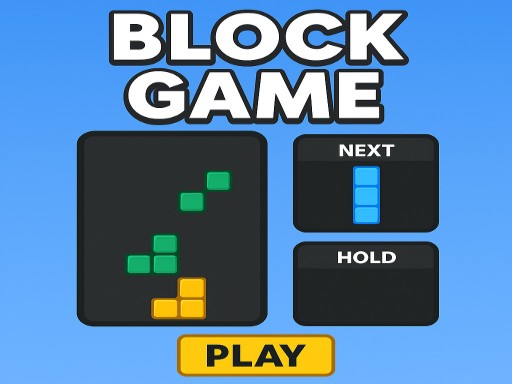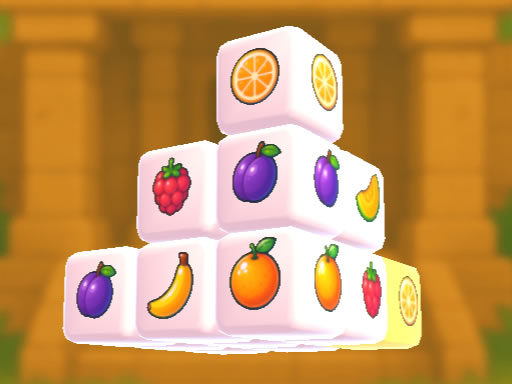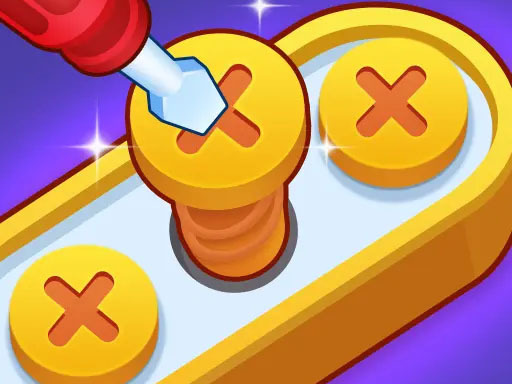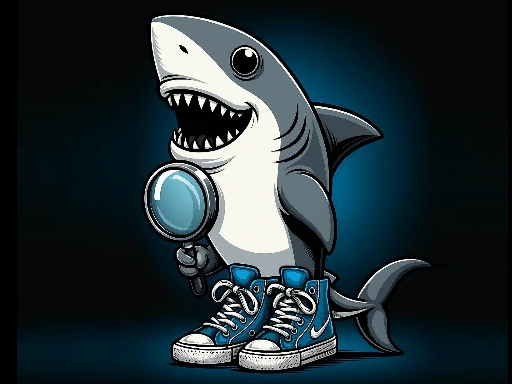Pixel Mosaic Puzzles
About Pixel Mosaic Puzzles
Okay, so listen, you know how sometimes you stumble across a game, and it just *clicks*? Like, it's not even something you were actively looking for, but suddenly, it's all you can think about? That's exactly what happened to me with this new discovery, Pixel Mosaic Puzzles. Seriously, you *have* to hear about this, because I'm telling you, it’s going to blow your mind in the best possible way.
I mean, I've always been drawn to games that let you build things, right? Whether it's sprawling cities in a sim, or intricate contraptions in a sandbox, there’s just something deeply satisfying about seeing your own vision come to life. But this… this is different. It’s stripped down, almost primal in its creative offering, and honestly, that’s where its genius lies.
The first thing that hits you, the absolute game-changer, is that there are no templates. None. Zero. You boot it up, and you’re presented with… a grid. Just a grid. And your imagination. That’s it. For a split second, it’s almost intimidating, you know? Like standing in front of a giant, blank canvas with a brush in your hand and the weight of infinite possibilities. But then, that initial flicker of apprehension gives way to this incredible rush of freedom. It’s not about matching a pattern or following instructions; it’s about *creating* the pattern.
What I love about games like this is that they tap into something fundamental. We all have ideas, images, concepts floating around in our heads, but sometimes translating them into a tangible form can feel like a monumental task. Pixel Mosaic Puzzles breaks that down into its simplest, most elegant form. You pick a color, you click a square. That’s it. One tiny, colored square. And then another. And another. And before you know it, you’re not just placing pixels; you’re sketching a hero, or a symbol that means something only to you, or even just an abstract swirl of colors that just *feels* right.
I remember my first time diving in. I stared at the grid for a good minute, just absorbing the emptiness. Then, I thought, "Okay, let's start simple." I pictured a little mushroom, you know, like the classic video game kind. Red cap, white spots. So I picked a deep red, and started clicking away, one pixel at a time, outlining the cap. Then I switched to white for the spots, carefully placing each one. The stem, a light brown. And as those tiny squares started to coalesce, to form something recognizable, there was this incredible surge of satisfaction. It wasn’t just a mushroom; it was *my* mushroom, born from nothing but a blank slate and a few clicks.
That’s when the real magic happens, when you start to lose yourself in the process. You know that feeling when you're so absorbed in a game that you lose track of time? That's the sensation this game creates, every single time. The clock on the wall becomes irrelevant. Your phone could be buzzing off the hook, and you wouldn't even notice. It's just you, the grid, and the evolving image. It's pure, unadulterated flow state, the kind that makes hours feel like minutes. You’re meticulously choosing shades, deciding if that one pixel needs to be a slightly darker blue to give the illusion of depth, or if a lighter green will make that leaf pop just a little more. You’re not just playing a game; you’re becoming a true pixel artist, one tiny square at a time.
And honestly, the "puzzle" aspect here is fascinating because it's entirely self-imposed. It's not about solving a pre-designed riddle; it's about taking a nebulous idea, a flicker of an image in your mind, and then figuring out how to translate that into these rigid, colorful squares. How do you convey a curve with only straight lines of pixels? How do you create a sense of light and shadow with a limited palette? It’s a spatial puzzle, a color theory puzzle, an abstraction puzzle, all rolled into one. And when a strategy finally clicks into place – when you realize that by shifting just three pixels, you can completely change the expression on your character's face, or that a single line of darker color can give a sense of texture to a brick wall – that’s a visceral, satisfying click of understanding that rivals any complex logic puzzle. You can almost feel the tension in your shoulders as you refine a line, then the release as it finally looks *right*.
The brilliant thing about this is how accessible it is. You don't need to be a seasoned artist. You don't need a drawing tablet or any fancy software. All you need is an idea, however small, and the willingness to experiment. And that’s what makes it so incredibly addictive. Every time you finish one piece, your brain immediately starts thinking, "Okay, what next? What if I tried to make a spaceship? Or my favorite game character? Or just a cool abstract pattern that would look awesome as a desktop background?" The possibilities are genuinely endless.
There's something magical about stepping back from a finished piece. You started with nothing, just an empty expanse of squares. And now, there it is. Your creation. It’s a testament to your patience, your vision, and your newfound pixel artistry. And then, the best part, the moment of reveal. You hit save, maybe take a screenshot, and then you just *have* to share it. Because you poured a piece of yourself into that grid, and you want to show it off. It's not about validation, not really, but about sharing that spark of creation, that moment of "look what I made!" with friends. You want them to see what you envisioned, what you painstakingly brought to life. And seeing what *they* create? That's a whole other level of inspiration. It makes you wonder about all the different ways people interpret the same blank canvas, all the unique heroes and symbols and abstract wonders that are waiting to be born.
In my experience, the best moments come when you push past that initial idea and start experimenting. Like, I tried to make a detailed portrait once, and it was a mess. But the *next* time, I focused on a simple icon, and it came out looking fantastic. It’s about learning the language of pixels, understanding how each tiny square contributes to the whole. It’s a learning curve, sure, but it’s a joyful one, full of small victories and "aha!" moments.
Just wait until you encounter the feeling of perfecting a gradient, or nailing the perspective on a tiny pixelated object. That sense of accomplishment, that pride in your own craftsmanship, is what keeps you coming back. You can almost feel the subtle resistance of the virtual brush, the satisfying click as each color lands perfectly. It’s not just a game; it’s a creative outlet, a meditative practice, and a testament to the power of pure imagination. Seriously, dude, if you’re looking for something that’s going to ignite your creative spark and give you that deep, satisfying feeling of having *made* something awesome, you absolutely, unequivocally need to check out Pixel Mosaic Puzzles. You won't regret it.
I mean, I've always been drawn to games that let you build things, right? Whether it's sprawling cities in a sim, or intricate contraptions in a sandbox, there’s just something deeply satisfying about seeing your own vision come to life. But this… this is different. It’s stripped down, almost primal in its creative offering, and honestly, that’s where its genius lies.
The first thing that hits you, the absolute game-changer, is that there are no templates. None. Zero. You boot it up, and you’re presented with… a grid. Just a grid. And your imagination. That’s it. For a split second, it’s almost intimidating, you know? Like standing in front of a giant, blank canvas with a brush in your hand and the weight of infinite possibilities. But then, that initial flicker of apprehension gives way to this incredible rush of freedom. It’s not about matching a pattern or following instructions; it’s about *creating* the pattern.
What I love about games like this is that they tap into something fundamental. We all have ideas, images, concepts floating around in our heads, but sometimes translating them into a tangible form can feel like a monumental task. Pixel Mosaic Puzzles breaks that down into its simplest, most elegant form. You pick a color, you click a square. That’s it. One tiny, colored square. And then another. And another. And before you know it, you’re not just placing pixels; you’re sketching a hero, or a symbol that means something only to you, or even just an abstract swirl of colors that just *feels* right.
I remember my first time diving in. I stared at the grid for a good minute, just absorbing the emptiness. Then, I thought, "Okay, let's start simple." I pictured a little mushroom, you know, like the classic video game kind. Red cap, white spots. So I picked a deep red, and started clicking away, one pixel at a time, outlining the cap. Then I switched to white for the spots, carefully placing each one. The stem, a light brown. And as those tiny squares started to coalesce, to form something recognizable, there was this incredible surge of satisfaction. It wasn’t just a mushroom; it was *my* mushroom, born from nothing but a blank slate and a few clicks.
That’s when the real magic happens, when you start to lose yourself in the process. You know that feeling when you're so absorbed in a game that you lose track of time? That's the sensation this game creates, every single time. The clock on the wall becomes irrelevant. Your phone could be buzzing off the hook, and you wouldn't even notice. It's just you, the grid, and the evolving image. It's pure, unadulterated flow state, the kind that makes hours feel like minutes. You’re meticulously choosing shades, deciding if that one pixel needs to be a slightly darker blue to give the illusion of depth, or if a lighter green will make that leaf pop just a little more. You’re not just playing a game; you’re becoming a true pixel artist, one tiny square at a time.
And honestly, the "puzzle" aspect here is fascinating because it's entirely self-imposed. It's not about solving a pre-designed riddle; it's about taking a nebulous idea, a flicker of an image in your mind, and then figuring out how to translate that into these rigid, colorful squares. How do you convey a curve with only straight lines of pixels? How do you create a sense of light and shadow with a limited palette? It’s a spatial puzzle, a color theory puzzle, an abstraction puzzle, all rolled into one. And when a strategy finally clicks into place – when you realize that by shifting just three pixels, you can completely change the expression on your character's face, or that a single line of darker color can give a sense of texture to a brick wall – that’s a visceral, satisfying click of understanding that rivals any complex logic puzzle. You can almost feel the tension in your shoulders as you refine a line, then the release as it finally looks *right*.
The brilliant thing about this is how accessible it is. You don't need to be a seasoned artist. You don't need a drawing tablet or any fancy software. All you need is an idea, however small, and the willingness to experiment. And that’s what makes it so incredibly addictive. Every time you finish one piece, your brain immediately starts thinking, "Okay, what next? What if I tried to make a spaceship? Or my favorite game character? Or just a cool abstract pattern that would look awesome as a desktop background?" The possibilities are genuinely endless.
There's something magical about stepping back from a finished piece. You started with nothing, just an empty expanse of squares. And now, there it is. Your creation. It’s a testament to your patience, your vision, and your newfound pixel artistry. And then, the best part, the moment of reveal. You hit save, maybe take a screenshot, and then you just *have* to share it. Because you poured a piece of yourself into that grid, and you want to show it off. It's not about validation, not really, but about sharing that spark of creation, that moment of "look what I made!" with friends. You want them to see what you envisioned, what you painstakingly brought to life. And seeing what *they* create? That's a whole other level of inspiration. It makes you wonder about all the different ways people interpret the same blank canvas, all the unique heroes and symbols and abstract wonders that are waiting to be born.
In my experience, the best moments come when you push past that initial idea and start experimenting. Like, I tried to make a detailed portrait once, and it was a mess. But the *next* time, I focused on a simple icon, and it came out looking fantastic. It’s about learning the language of pixels, understanding how each tiny square contributes to the whole. It’s a learning curve, sure, but it’s a joyful one, full of small victories and "aha!" moments.
Just wait until you encounter the feeling of perfecting a gradient, or nailing the perspective on a tiny pixelated object. That sense of accomplishment, that pride in your own craftsmanship, is what keeps you coming back. You can almost feel the subtle resistance of the virtual brush, the satisfying click as each color lands perfectly. It’s not just a game; it’s a creative outlet, a meditative practice, and a testament to the power of pure imagination. Seriously, dude, if you’re looking for something that’s going to ignite your creative spark and give you that deep, satisfying feeling of having *made* something awesome, you absolutely, unequivocally need to check out Pixel Mosaic Puzzles. You won't regret it.
Enjoy playing Pixel Mosaic Puzzles online for free on Midiablog games. This Puzzle game offers amazing gameplay and stunning graphics. No downloads required, play directly in your browser!
How to Play
Mouse click or tap to play





Comments
This game is awesome! I love the graphics and gameplay.
One of the best games I've played recently. Highly recommended!